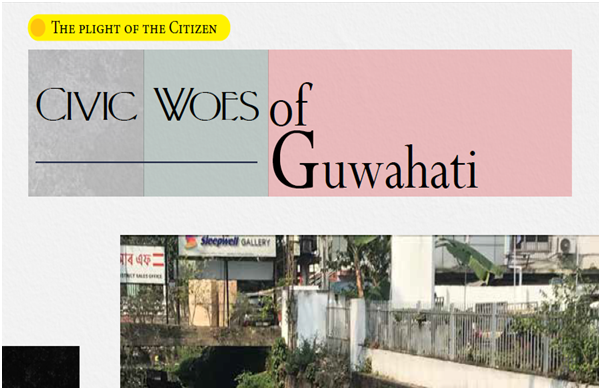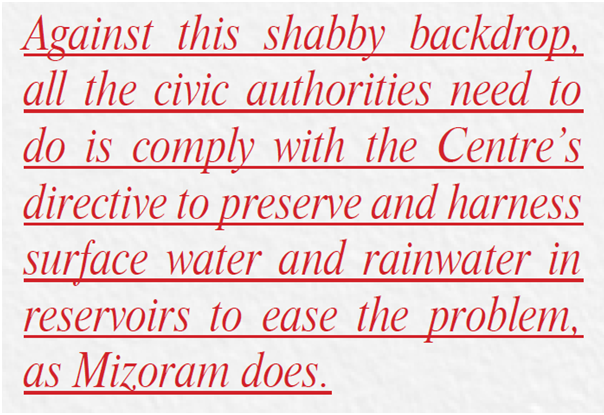
There was a time, say till the 70s when the countenance of Guwahati was almost like that of a somnolent, nondescript town. But in the past forty years, the city has undergone a sea-change. Both in terms of length and breadth, it has stretched out considerably, thanks to the ever-growing city population and large-scale exodus of people from various parts of Assam and the North-Eastern states. This migration of people from the rest of the region is triggered by their requirements for higher studies, engineering, or medical courses, better employment opportunities or even for improved health-care system easily available in the city.
Consequent upon which, what has followed is there for all to see: the rapid, haphazard growth of the multi-story ownership residential flats, super markets, hotels, air-conditioned high-rise commercial buildings popping up in umpteen numbers in almost every nook and corner of the city and, interestingly, such massive buildings, standing along the arterial roads including GS road, RG Baruah road and Lakhtokia-Fancy Bazaar area, have housed a number of highly-illuminating big bazaars, swanky shopping malls repleted with expensive high-quality shoes, garments, showrooms of costly cars of almost all leading companies, two-wheelers, physiotherapy, gymnastic centres, beautification clinics, spa, large hotels, restaurants offering a large variety of sumptuous food, private and PUS banks, insurance companies, even private colleges proffering diverse courses for aspiring students, and so on. In the evening, if any tourist saunters along these posh, crowded areas, he can be highly impressed by seeing pomp and grandeur of the extremely illuminating city with showrooms, decorated shopping malls, big restaurants etc.
For a moment, it may seem to him that he is in the Dubai International Airport that resembles any illuminating, trendy high-rise commercial complex in Guwahati. He may not believe that the city which is known to be the only principal metropolis in the entire North-Eastern region can have a set of civic problems to tackle. But in reality, it has. Years of all these developmental activities have essentially taken a heavy toll on the available limited amenities in the city. To exemplify, the shortage of drinking water, water logging, flash floods, traffic snarls and encroachment of footpaths have at present snowballed into major problems of the city.
that resembles any illuminating, trendy high-rise commercial complex in Guwahati. He may not believe that the city which is known to be the only principal metropolis in the entire North-Eastern region can have a set of civic problems to tackle. But in reality, it has. Years of all these developmental activities have essentially taken a heavy toll on the available limited amenities in the city. To exemplify, the shortage of drinking water, water logging, flash floods, traffic snarls and encroachment of footpaths have at present snowballed into major problems of the city.
With the situation gradually worsening in different water-scare urban areas of the city, such as parts of Anil Nagar, Nabin Nagar, Ulubari, Lachit Nagar, Christian Basti etc; to name a few, following most bore-wells there running dry over the years with large-scale extraction of surface-water not only for domestic purposes but also for commercial purposes. A significant number of people in these localities have to buy water delivered by private water tankers who charge about Rs 500 for 1,000 litres, indeed, a hefty amount which a poor person can seldom afford. But nobody is sure if water is safe, contamination-free, or fluoride-free or, even arsenic-free, but the people are purchasing it day in and day out, in spite of the huge Brahmaputra River flowing through Assam. While ensuring regular, clean, safe drinking water supply mechanism which is ought to be the bounden duty of a welfare State, the civic authorities have come a cropper in providing piped drinking water to even over 40% of the total population of Guwahati, possibly because of the existing eight water plants supplying below the total installed capacity of 107.85 million litres of water per day.
Dwaipayan Dasgupta
To read the further articles please get your copy of Eastern Panorama May, June issue @http://www.magzter.com/IN/Hill-Publications/Eastern-Panorama/News/ or mail to contact @easternpanorama.in


